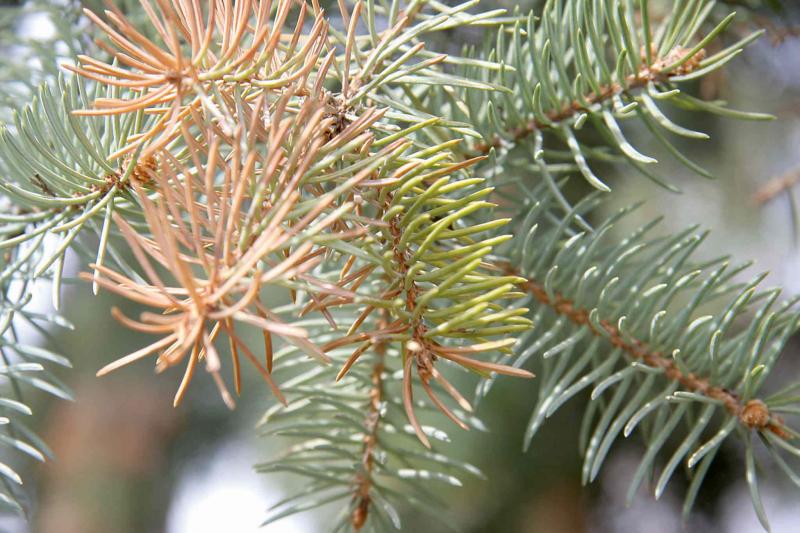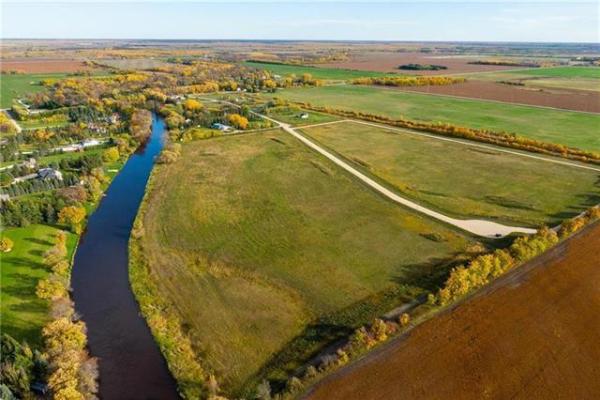
Of all the tree issues that concern property owners, unquestionably Colorado blue spruce and the green variety of Colorado spruce year after year top the list.
This variety and species of spruce simply has lost most of its ability to deal with a host of disease and pest issues. I have written about the problems with spruce trees a number of times, but as a topic, the problems with these trees continue to cause stress for many people who have these trees.
Without exception, of every Colorado spruce I have examined this year -- and I have looked at many hundreds -- tip blight fungal disease (also called Sirococcus) shows up consistently in trees over 10 years of age and occasionally in those younger in age.
Tip blight fungal disease -- an indigenous disease in Manitoba white spruce and black spruce -- has become epidemic throughout urban and rural Manitoba.
Sirococcus tip blight disease normally affects the current growth of spruce twigs, resulting in the death of the needles and tips of twigs. The disease causes slightly or prominently curled ends of the twigs starting in late May or June.
Infected twigs are denuded of their needles, except on one side in some instances. Later in the summer, the disease returns in many trees to change the needle colour at the ends of the twigs to a bright green-yellow.
In Colorado blue spruce, this discolouration is often very dramatic. The blue needles turn bright green and then slightly discolour to a bright green-yellow later into the summer. The needles turn a straw to red-brown colour in the late summer as they die before falling from the twigs.
This colouration pattern simply did not show up in Colorado spruce earlier than seven years ago.
Other fungal diseases such as spruce needle cast turns needles a dark purple-brown especially near the lower part of the tree. Without exception, all spruces will be infected with a slow-killing fungal disease simply called Cytospora.
The disease resides inside the critical cambial area just under the bark. As certain cambial cells die, they release a clear liquid infected with the disease. The clear colour slowly turns grey-white, which becomes very evident as vertical streaks down the exterior of the trunk bark.
Branches also become heavily infected. Older streaks will discolour into a pale yellow colour. On occasion, you might see a royal blue colour in those streaks. Cytospora disease tends to kill the lower branches first and then work its way up the tree. It does have a tendency to pass over summer branches without killing them. Untreated Cytospora and tip blight will eventually kill most if not all of the tree.
Both tip blight and needle cast diseases are treatable with two or preferably three copper fungicide sprays spaced out during the summer. Treatment is best done by licensed spray applicators.
Unfortunately, the treatments need to be repeated annually until there are no longer any signs of this disease.
Why is this problem happening with the spruce? Colorado spruce has been manipulated by horticulturists since 1926. In order to obtain the perfect-shape tree with deep blue or blue-grey colours, the disease-resistant genes have been virtually weakened to the extent they simply can no longer protect this species of spruce. Scientists back then predicted that this tree would fail to thrive in the urban and rural landscape.
Properly fertilizing your spruce trees next spring will significantly help the spruces fight the disease. Strongly infected trees should be continuously fertilized either in the fall or spring for at least three years ideally longer.
The essential nutrients in good tree fertilizers help the tree establish healthy growth to help counteract the disease infections. Hopefully, property owners should have already watered all of their coniferous evergreens this fall before the ground froze.
Michael Allen M.Sc.F., RPF (ret'd) is a consulting urban forester, tree diagnostician and certified arborist. He owns Viburnum Tree Experts, a Manitoba company that provides objective assessments of the condition and the care required for trees and shrubs on home and business landscapes. If you would like your property trees assessed, he can be reached at 204-831-6503 or by e-mail viburnumtrees@shaw.ca His website is treeexperts.mb.ca.
Michael's new book, Dr. Tree's Guide to the Common Diseases of Urban Prairie Trees, is available from the author or from McNally Robinson and Chapters bookstores.




